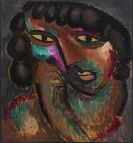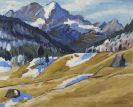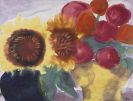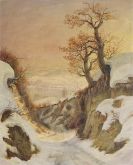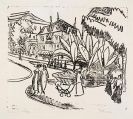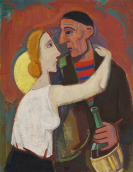
Otto Mueller
Liebau/Riesengebirge
1874 -
Obernigk bei Breslau
1930
Born on 16 October 1874 in Liebau in the Sudeten Mountains, Otto Mueller spent his early years with his mother, brothers and sisters at his grandparents' Liebau estate. In 1882 he moved away to join his father at Görlitz, where he attended primary and higher secondary school.
Between 1890-92 he trained in lithography in Görlitz and Breslau. From 1894 until, it is believed, 1897 Mueller studied at the Dresden Art Academy under Georg Hermann Freye and, briefly, Carl Ludwig Noah Bantzer. In 1898-99 Mueller and his friend Paul Kother went to Munich to study. Although Gerhart Hauptmann interceded on Mueller's behalf, he was not taken on as pupil by Franz von Stuck in winter term since the class was already full although Stuck advised him to try again in for summer term.
Preferring to educate himself, Mueller moved to Wolfratshausen, south of Munich. In autumn 1899 he set out by bicycle for Dresden. He worked mainly there and in the surrounding region until 1908, when he moved to Berlin. There he met Wilhelm Lehmbruck and the "Brücke" painter Erich Heckel. Two years later Mueller met other "Brücke" artists and joined this artist group in 1910.
He was a very close friend of Erich Heckel. After spending two years in the war, from 1916 to 1918, he was appointed professor at the Breslau Akademie where he continued to teach until his death. Mueller's artistic origin lies in Art Nouveau, which explains the decorative and linear aspect of his art. The way he emphasised the silhouette and the classical, elegant and graceful appearance of his figures reveal another important influence: Wilhelm Lehmbruck. Mueller's style underwent a significant change when he turned towards Expressionism. His forms were now broader, the contours more emphasised. He began painting the subjects that we know so well: female nudes in a landscape which today are considered the best nude compositions of that period.
Otto Mueller is an important representative of German Expressionism, even though his ideas also differed considerably from those of other leading Expressionists. He focused on a harmonious simplification of form, colour and contours rather than on passion. Mueller died in 1930 in Breslau.
Would you like to sell a work by Otto Mueller?
Infos for seller
